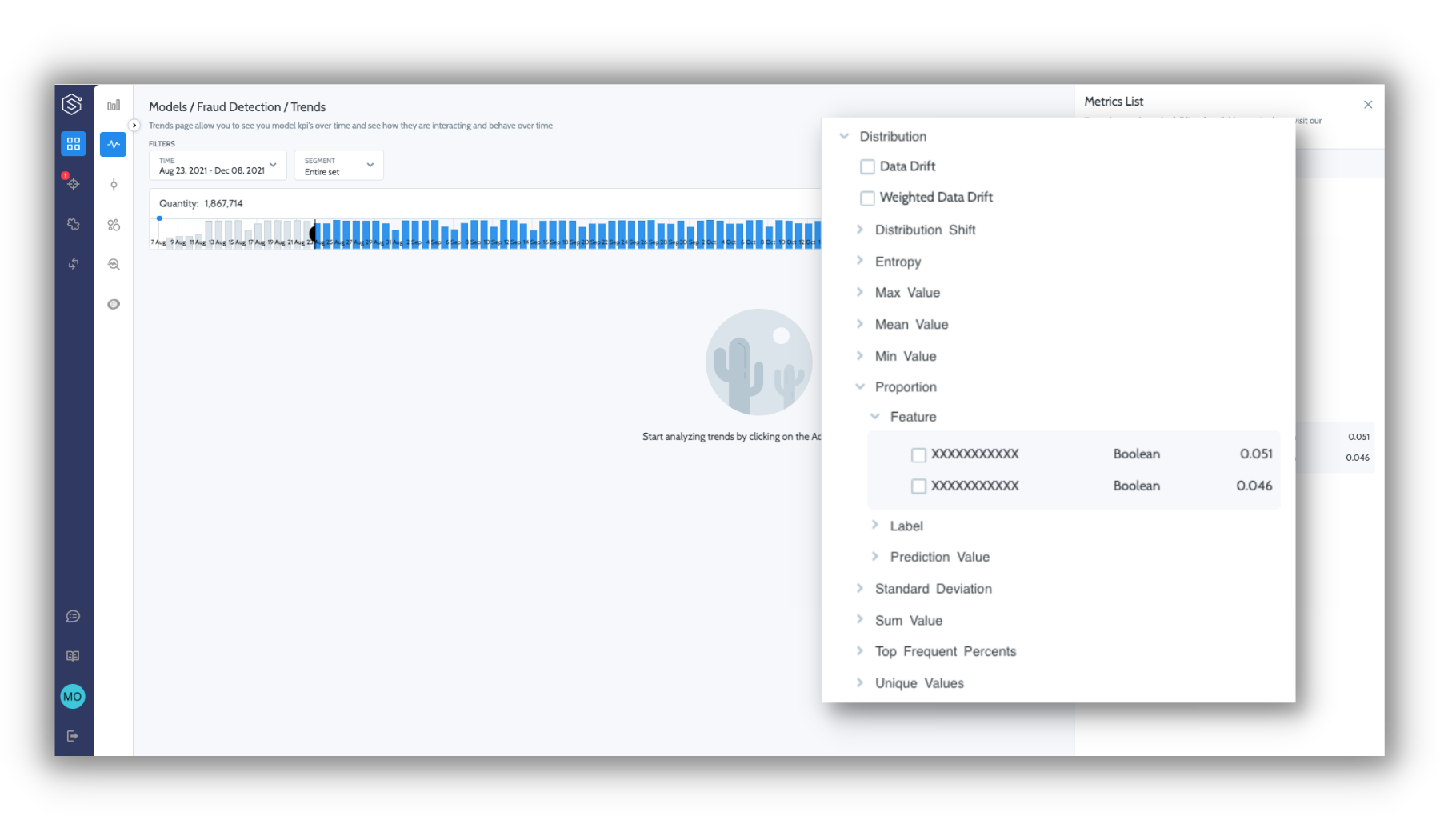Distribution metrics
Statistical measures for any data entity throughout your ML process
(Inputs, metadata, outputs, and labels)

Statistical property metrics measured on the entity level are divided according to data entity format type:
| Metric | Categorical | Numeric | Boolean |
|---|---|---|---|
| Distribution shift | ✔ | ✔ | ✔ |
| Top frequent percents Frequency of the mode value. | ✔ | - | - |
| Unique values The number of unique values. | ✔ | - | - |
| Entropy Calculation of the entropy on the distribution of categorical entities. | ✔ | - | - |
| Min value The lowest value. | - | ✔ | - |
| Max value The highest value. | - | ✔ | - |
| Sum value The sum of values. | - | ✔ | - |
| Mean value The average value. | - | ✔ | - |
| Standard Deviation The measure of the amount of variation in a numeric entity. | - | ✔ | - |
| Proportion Percent of positive value. | - | - | ✔ |
Feature Importance
Superwise measures the effect a feature has on a model. Superwise calculates feature importance using SHAP values during baseline creation, or you can set this manually while configuring the schema.
Distribution shift & drift metrics:
-
Distribution shift
How different the distribution in the selected data is from the baseline over time. The scale ranges from 0-100, where 0 indicates identical distribution, and 100 indicates orthogonal distribution. -
Input drift
The average distribution shifts across all features.
Updated over 3 years ago
